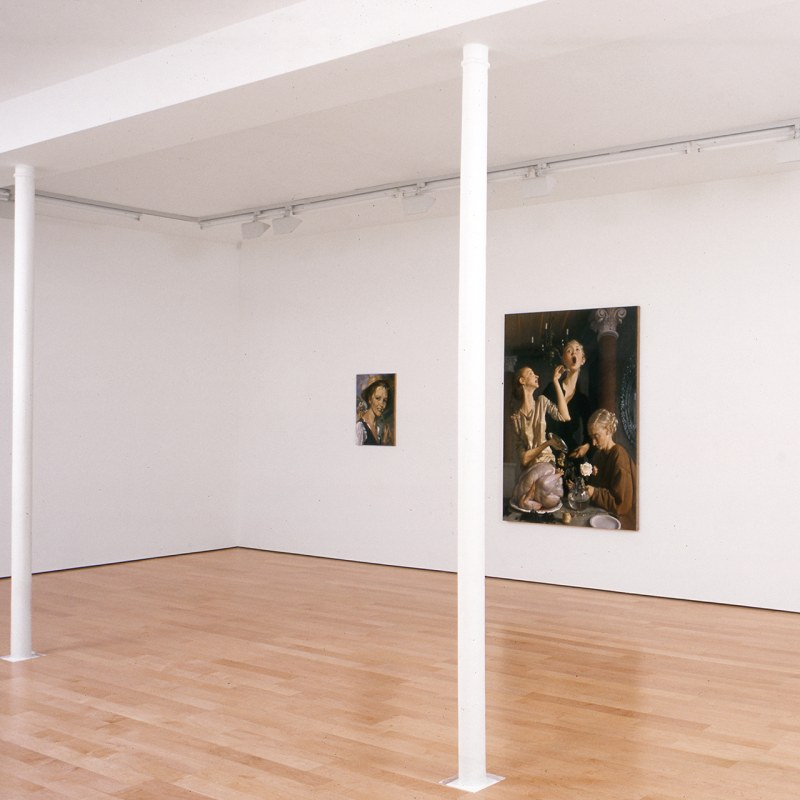‘I like the idea that Picasso looked at women all the time, but had a strange, antagonistic, questionable relationship to them. It’s a strange act of adoration, but it’s also very violent. My favorites are the pictures of Dora Maar, where she’s crying, a weeping woman, and her eyes are like spoons with soup falling out of them. She’s crying all the time, she’s upset, and he’s an asshole and has no sympathy. His coldness is fascinating and it’s the real subject of the painting. I don’t have the same temperament, but I like the idea of painting someone who is crying, of observing them like that. Have you ever experienced a moment when you can’t believe how cold-hearted you are? It’s an emotional moment. I’ve realized that it’s analogous to painting - to paint you have to be very observant and cold about it. This act of portraying is, in a way, paradoxical. I have to have a feeling to paint, but as a painter I cannot have the feeling so much that I can’t objectify the image.’ John Currin in Rochelle Steiner ‘Interview with John Currin’, John Currin (New York: Harry N Abrams, Inc., 2003)
For his third exhibition at Sadie Coles HQ, Currin presents a concise new group of eight new works, introducing still-life subject matter alongside his more familiar figurative imagery. A reclining nude recalls his black background nudes of the late 90s, paintings which married the influences of Cranach and Botticelli, but here playing on the foreshortening of Mantegna to celebrate a new ideal of beauty. The middle-aged woman in Bent Lady, gaily contorted in front of a luscious rose bush, has shaken off her dour peers who were the subjects of a rather darker, peculiarly asexual group of earlier imaginings of divorcee fund-raisers. In the biggest and most elaborate composition in the exhibition, three women of different ages, all based on the artist’s wife, are seen preparing Thanksgiving Lunch. Beautifully realised, the vignette affectionately mocks the domestic rituals of the middle classes, a scene elevated by the myriad of art historical references (and, what is quite possibly, the most lovingly painted turkey in the history of art).
Examining John Currins’ paintings of women - from the pneumatic babes to the middle aged, the sick girls lying in their beds to the classical nudes - we are able to identify them all. Or rather we are able to categorise - for they do not exist as individuals. They are composites, imaginary beings, assembled via the pages of Cosmo and Playboy, from stock photos, from life models and through the canon of great European painting. Robert Rosenblum recently observed in an essay that `Currin’s fusion of venerable past and vulgar present comes out as a perfect hybrid that lives in both worlds’. In both worlds of representation that is - as Currin himself observes, `The people I paint don’t exist. The only thing that is real is the painting. It’s not like a photograph where there’s another reality that existed at a certain moment in time in the past. The image is only happening right now and this is the only version of it. To me, that’s fascinating. It’s an eternal moment.’
The show coincides with a solo exhibition at the Serpentine Gallery, which originated at the Museum of Contemporary Art in Chicago; it is his first individual show in public institutions both sides of the Atlantic. Currin has shown extensively throughout Europe and the United States, and was included in two of last year’s key exhibitions Dear Painter at the Centre Pompidou in Paris and in Drawing Now: Eight Propositions at MoMA in New York.
For further information please contact the gallery at +44 (0)20 7493 8611 or press@sadiecoles.com
